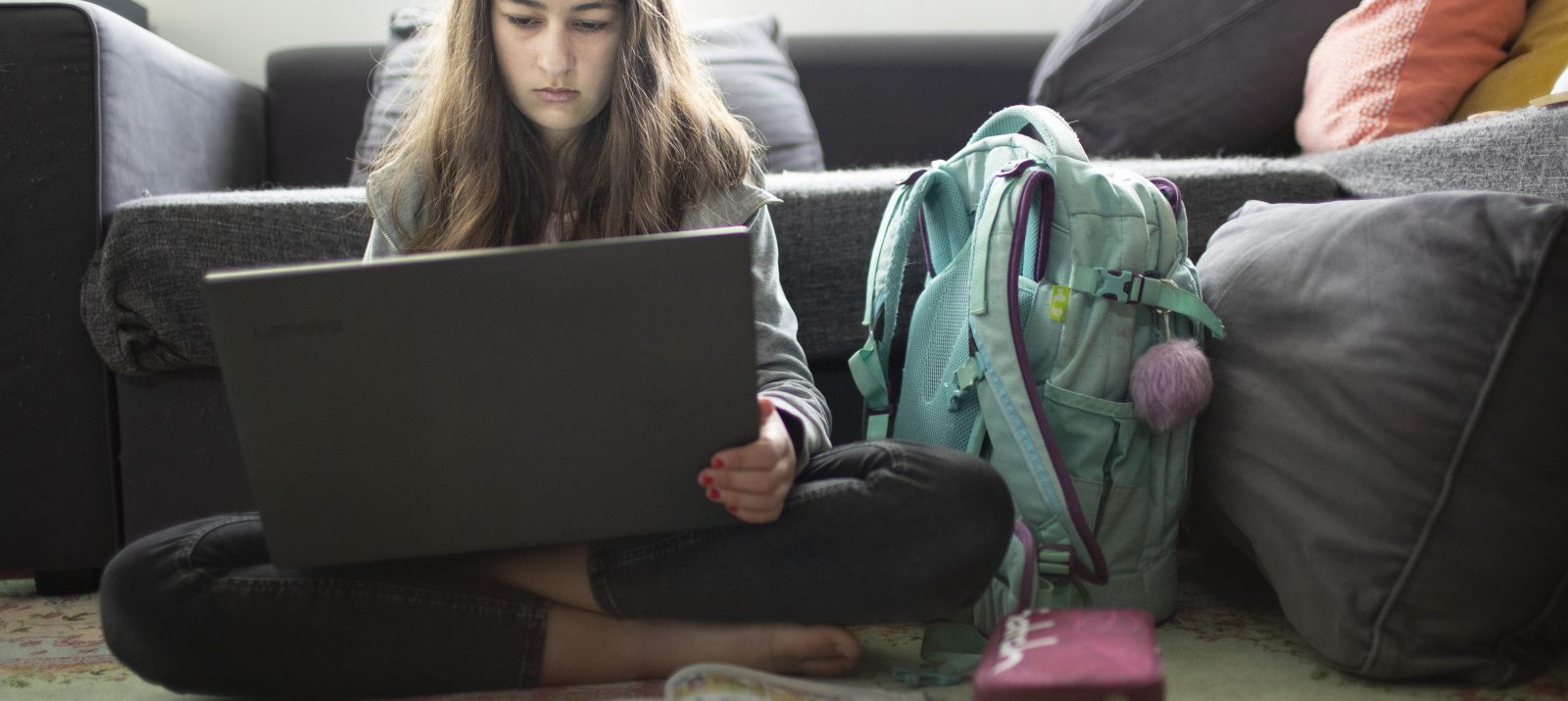
Digital lessons in the morning, a video call with your girlfriend in between, and computer games as evening entertainment – this is probably what everyday life looks like in many families. When school and sports clubs are closed and contacts have to be limited, children and young people spend more time with media. In this article, we explain how you can sensibly accompany your child in media use, even in lockdown.
In lockdown, many media-free activities are cancelled or moved to the Internet: Classes are not held in the classroom but via video conferencing. Instead of tutoring, explanation videos help with schoolwork. Soccer practice is cancelled and replaced by a sports video on YouTubereplaced. Instead of meeting friends, children and teenagers play computer games or spend their time with TikTok, Instagram, and other apps.This quickly adds up to many hours a day that your child spends in front of screens. Established rules on media time are no longer observed. As a parent, you may be concerned that your child is on their cell phone too much and their media use is becoming excessive and problematic.
Using media more during lockdown is normal and probably applies to you as much as it does to your child. In addition, if you feel that your child is too attached to the smartphone or game console, you should openly address him or her about it. You may well be surprised at how competently and consciously your child uses media to cope with the current situation. For example, if it spends a lot of time on social media, it’s probably its way of still keeping in touch with friends. TikTok videos from influencers in other countries can also help you feel in touch with the world “out there.”
Perhaps you have agreed on fixed media times in the family and recorded these, for example, in a media usage contract . In the current situation, it is important to adjust the agreements or to record any at all. Distinguish between learning and leisure time. After all, the time your child spends watching explainer videos for school should not be subtracted from the time they are allowed to watch videos for entertainment. This is all the more important because many platforms that children and young people use in their free time now include learning content, for example on TikTok or YouTube . Binding agreements can help your child not to be distracted by fun content while learning, but to enjoy it in a relaxed way after schoolwork. Be aware of your role model function : explain to your child when you use your smartphone and computer for work and when you use them for entertainment. Binding rules that you establish together and to which all family members adhere create clarity and trust.
At the same time, it is important to schedule screen-free times to avoid digital stress. A family game night or cooking together are a nice balance to the evening computer games or Netflix watching. Exercise in the fresh air on a weekend outing is good for everyone in the family and creates great memories. But media can also be used to diversify the time: If your child likes to craft, you can watch YouTube to find creative DIY projects, or do puzzles together while listening toradio plays or podcasts . We have put together a collection of creative media projects for you here.